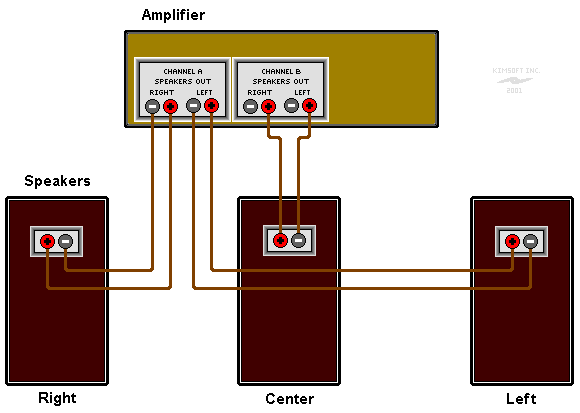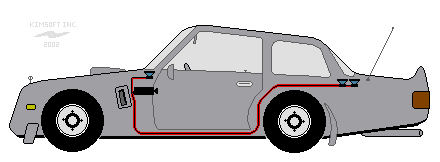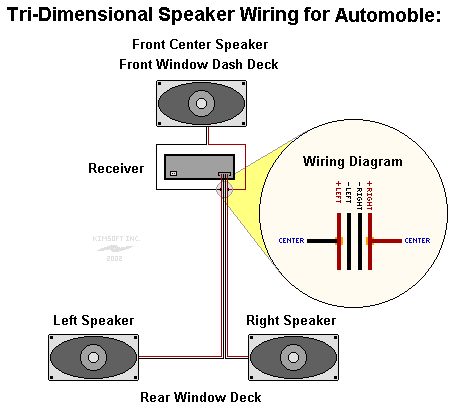|
|
|
Experience the world of Tri-Dimensional Audio. If you are just not up with the times with the latest digital Dolby surround sound THX or pro-logic home theater system; then here is the poor man's way of getting the most of your antiquated stereo system. A good friend introduced me to the wonders of Tri-Dimensional sound back in the early 70's, and I still love to use the Tri-Dimensional setup for stereo audio whenever possible.If you have ever used a vocal remover process or device, then you have started to dwell into the art of Tri-Dimensional Audio. Working with both analog and digital audio, you may be familiar with adding or subtracting the left and right channel to find this somewhat mysterious third channel. Depending on the production process, high quality stereo recordings usually always contain the center channel embedded into the differential of both the left and right stereo channels. Sub sequentially the vocals are primarily placed on the center channel by means of phasing the live mono vocal track slightly between the left and right channel during the mix down production process. Often the lead guitar or other instrumentals are also frequently placed on the center channel. If it is done correctly in the studio; this leads to a wonderful Tri-Dimensional product.
You do not need to have a high end stereo amplifier and receiver. All you need is any stereo amplifier receiver and a third speaker, preferably the same ohm rating as your other two speakers on the system as specified by the amplifier. If your amplifier is void of outputs for a second set of ''B'' speakers, simply wire the center channel to the positive leads of both the right and left speaker outputs on the amplifier. However, I recommend a receiver amplifier that has more than one set of speaker outputs with a level adjust control for the center speaker on the ''B'' speaker output.
For Tri-Dimensional Audio with Video, I suggest placing the left and right speakers as you would with any stereo system. The left speaker on the left of the video monitor or TV, and right speaker on the right. The center Tri-Dimensional Speaker then being placed above or below the Video Monitor or Television, equally between the left and right speakers. Be sure you have a good stereo audio source from a stereo video player, DVD, or stereo TV channel for best results. For audio alone it is sometimes better to have the right and left speakers moved to the rear wall. By the way, the center Tri-Dimensional channel is a true test of stereo separation on any two track recording.
If you are going for the all out surround sound split or you happen to have a true quadraphonic receiver on your hands, the quads go in the corners as always, and the front center is placed in the direction of view, such as with the video, or directly behind the projection screen when viewing cinematic films. I do not usually suggest putting the front and rear left and rights into Tri-Dimension, but it is interesting to hear the differential between the front and read channels of a good quadraphonic recording. If you happen to have a old quadraphonic LP record you will find that the front and rear channels are slightly out of phase. Versus a true four track recording where you have four independent recordings playing simultaneously. In theory you could have eight speakers on a quadraphonic system, but sometime more is not better. (see quad needle diagram)
Note that none this will not give you true dolby surround sound or IMAX Theater sound. They use six independent audio channels or even more in a system like that, and it will also cost you a pretty penny if you want to have a system like that in your living room. So until then, the Tri-Dimensional setup is still the best work around. Of course the more true audio tracks you are playing simultaneously the more speakers you will need to play them correctly. Speaker placement is also important; as you need to have your speakers placed proportionately to how the audio engineers had their speakers placed. This is not always possible either. For the perfect reproduction of a concert or movie; we would have to be at the concert, or at least the exact theater the mix down was done in. These sorts of things are often initially over looked and usually wind up blowing the budget way out of proportion at the last minute post production. So just put as many speakers around your dance floor as you can afford, then make the best of them.
Hey, it works in your car too! And you can finally put that factory front dash speaker to some good use. Put the main left and right speakers in the rear window deck, and wire the Tri-Dimension to the front dash deck speaker. Which reminds me; this is where it gets weird. When all the speakers are on the same output, the balance knob works kind of weird. You really notice this in your car when you turn the balance all the way to one side. The center channel gets louder. And if it is a true mono recording, the center channel will be void of any output when the left and right channel are set to true center balance. Lastly, I hope you enjoy the world of Tri-Dimensional Audio as much as I have over the years. Good Luck! And as always, experiment at your own risk, no implied warranty or guarantees here. I have let the smoke out of some things a time or two myself; but I'm sure I learned something in the process. Check all your wiring and ratings carefully!




